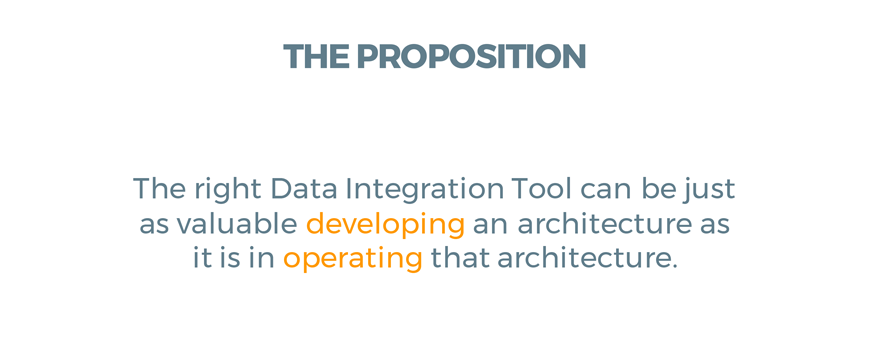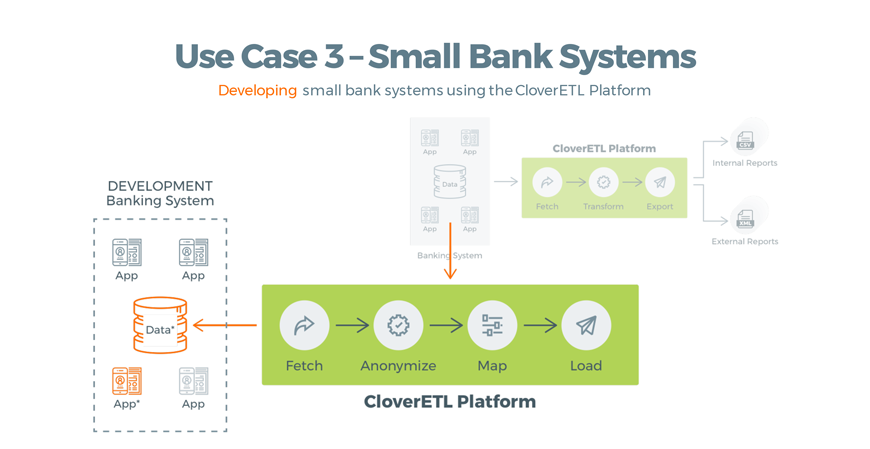Data integration tools aren’t just for data integration architecture. With some creative thinking, there are many more processes that a data integration platform can improve.
For example, the right data integration tool can be just as valuable in developing a data integration architecture as it is in operating that architecture.
What is Data Integration Architecture?
Data integration architecture is simply the pattern made when servers relate through interfaces.
We’ve come across several instances of data architects using data integration to develop data architectures, and in our latest webinar, we took a look at three cases to see how organizations managed to significantly speed up development.

You can watch the full (15 minute) webinar here, but here’s a quick summary:
From a 10-month change cycle down to 4 weeks
A large financial services institution is reorganizing itself in a bold move to close the gap between IT and business teams, significantly reducing the delays and friction typically present with the traditional 'waterfall' approach.
On the user side, their business teams design and maintain data modeling and data integration. But then, instead of developers taking over, they use data integration architecture to transform data models into executable 'LEGO bricks', automatically and error-free. These can be easily combined into visual workflows, with much less skill required.
This innovation allows for a very rapid turnaround, shortening the time from an idea to actual production from months down to just 3 or 4 weeks.
Automating regular updates to an analytics warehouse
Providers of an association management system were defining the layout of their analytics dataset with just an Excel file. They use a data integration platform to extract architecture from the Excel and load the resulting workflows into production, automating regular updates to the analytics warehouse.
All the architect needs to do is to maintain his Excel doc.
Testing data architecture changes
In another financial institution, as banking products and related applications come and go, the data architecture that supports them changes. The IT team needs a robust test environment to validate changes. By far the best way to do this is with real banking data, but for obvious privacy and security issues this isn't possible.
Using a data integration platform, they can extract real data, anonymize it, and load it into a test environment.

We explain these three use cases in more detail in the webinar, and show you how thinking creatively about uses for data integration platforms can lead to some clever solutions. Watch the webinar now.
Explore: Data ArchitectureBy CloverDX
CloverDX is a comprehensive data integration platform that enables organizations to build robust, engineering-led, ETL pipelines, automate data workflows, and manage enterprise data operations.









